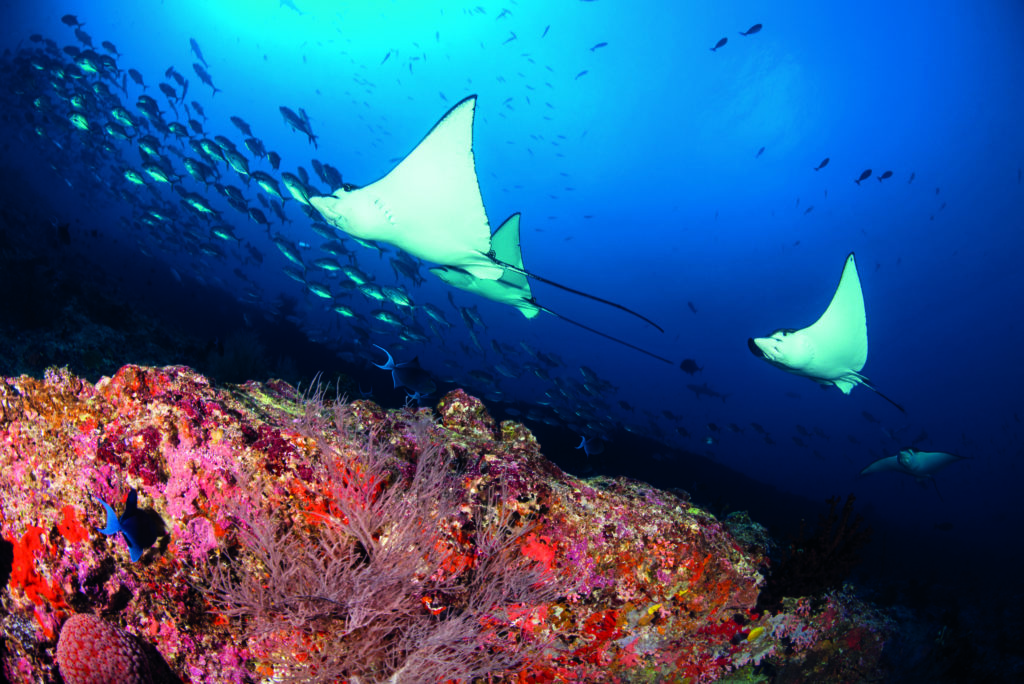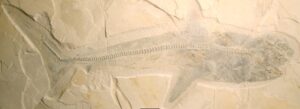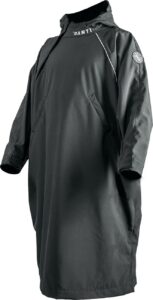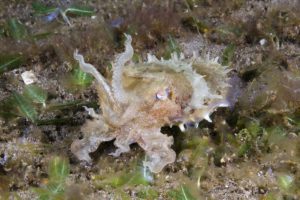Stuart Philpott was on a mission to get shots of big fish and other pelagic species, and the team at Prodivers in the Maldives were more than happy to step up to the challenge and deliver encounter after encounter
Prodivers instructor Mohamed Shameen Ali said: “Diving in the Maldives is all about the currents”, and after experiencing Fushivaru Kandu at full flood, I wholeheartedly agree. Marine life activity is focused around the channel entrances, where the water flow is strongest. When the current subsides, showtime is over – but only until the next tidal change.
I was gunning for big fish shots, particularly eagle rays. But to fill the frame of my trusty 16mm fisheye lens, they needed to be close – meaning less than an outstretched arm’s distance away. Eagle rays are not the easiest marine creatures to photograph. Usually found at the channel entrances in squadrons of up to 20, they are very sensitive to sounds and movement. When one member of the group gets agitated and bolts, they all bolt. Sometimes the largest, most-dominant eagle ray will hang back and, if approached cautiously, there may be an opportunity to get close.
My chances of keeping up with an eagle ray in full flight using fin power alone were pretty slim, so to give ourselves a fighting chance, Mohamed Shameen Ali (Mosti) had equipped us with Apollo AV-2 DPVs, aka scooters.
If scooters had a distinct purpose in life, then the Maldives has to be the perfect venue. With a top speed of 2.5mph, it was far easier to manouvere in and out of the currents. Prodivers (www.prodivers.com) offer scooter rental at all of their resort dive centres. Visiting divers need to complete a basic two-dive course before they can hire them out, or hold the appropriate PADI Specialty cert. The scooters really did make a difference. Without them I would have had far less photo opportunities and my air consumption way higher due to the extra exertion.
There are two ways to drive an Apollo AV-2, either held out in front or sat on like a saddle. Most divers prefer the ‘hands-free’ saddle option. Adding a camera to the mix made my job slightly more interesting. Fiddling with the three-speed throttle lever and lining up for a shot at the same time took a while to master.
If the turtle wasn’t moving very fast or the shoal of snapper looked relaxed, I would hand over my scooter to Mosti so I could move around more freely. Prodivers were also happy to loan me a rental AP Valves Inspiration rebreather, but having to think about picture compositions, scooter controls and keep an eye on rebreather settings was just too much task loading for my poor brain to handle. I much preferred to keep things simple!
Another Prodivers instructor, Sina Leupi, had drawn the short straw and agreed to model for my pictures. The grand plan was to get as close as possible to every marine creature we encountered. Fortunately for me, Sina from Switzerland turned out to be absolutely perfect for the job. Whether we were taking pictures of eagle rays, turtles or bumphead parrotfish, Sina was in the thick of it, wide-eyed and perfectly poised.
Beforehand I sat down with Mosti and Sina to work out an itinerary. The channel crossings were definitely ‘action city’. Strong currents attracted predatory reef sharks, manta rays, eagle rays, Napoleon wrasse, shoals of jacks, barracuda as well as other passing pelagic species.
Fushivaru Kandu was probably my best bet for eagle ray encounters, but this depended on the time of year. When the currents changed around Fushivaru it is not the preferred crossing, and divers usually choose Kuredu Express instead.
For turtle sightings it has to be Caves off neighbouring Kuredu, and there’s always hundreds of anemones at Anemone Thila, and so on and so on, until we had sorted out several days worth of exciting dive sites.
I saw plenty of reef sharks throughout but couldn’t quite get close enough for a good enough shot. Usually Prodivers offer a two-tank morning dive (returning to the resort around lunchtime), one dive in the afternoon and night dives. There are also daily guided snorkelling trips.
I had based myself at the recently opened five-star Hurawalhi resort located five to ten minute’s boat ride from the third-most-popular resort in the whole Maldives, Kuredu. I could tell Hurawalhi was sheer class from the very first moment I stepped foot onto the jetty.
Covering an area of approximately 165 metres by 400 metres, this adult’s only island is not massive. A row of 60 ocean villas extended out over the shallow lagoon by another 400 metres, boosting accommodation to a total of 90 rooms.
The ocean villas seemed to be favoured by the Chinese, and the beach villas European clientele. At present about 50 percent include infinity pools (by the end of the year, all of the beach villas will have private pools). I had chosen an ocean villa without pool. There was something deeply therapeutic about waking up to a sea view.
When I wasn’t diving or dining, I would sit and watch the parrotfish cruising by below me. If I was feeling particularly energetic, I could always walk down my personal stairway to the water’s edge and go snorkelling. Maybe paradise does actually exist?
Guests have a choice of no less than three restaurants and bars. The main attraction has to be 5.8 underwater restaurant. With a seating plan for 30, this is one of the largest underwater restaurants in the world. Surrounded by a thriving reef, it’s the perfect venue for non-divers that want to experience the underwater world.
There are three two-hour sittings each day offering either a five-course lunch or seven-course dinner menu. I managed to book a lunchtime slot and was totally mesmerised by the display of colourful marine life. For once I didn’t have to sit and entertain my dinner date!
The evening session is even more insane. The sea is in total darkness apart from the lights illuminating the surrounding reef. Giant trevally hunted among the shoals of fusiliers, while puffers and parrots munched on the corals.
Over the course of my stay I managed to experience quite a few channel crossings. We would usually begin our dive at one side of the channel, scooter along the wall into the high current areas and then at the later stages drift back inside onto the shallower pinnacles. Absolutely anything could happen, nothing was predictable.

Underwater visibility easily topped 30 metres on the majority of my dives, so I could see way into the distance and plan my marine life confrontations. We encountered hawksbill turtles nibbling on the corals, stingrays cruising along the seabed and inquisitive Napoleon wrasse, which mainly stayed on the periphery.
Nearer the epicentre I saw plenty of reef sharks, on some occasions more than 100, and at other times just a few swimming along beside me. Always schooling jacks, sometimes barracuda, and occasional shoals of batfish.
Slightly deeper, beneath the wall, there were ledges and overhangs inhabited by grouper and swathed in giant sea fans. Eagle rays would mainly be found in the stronger current areas. Back inside the channels on the shallower pinnacles I would see large shoals of fusiliers, blue striped and humped-back snapper.
Hurawalhi’s house reef called Aquarium turned out to be the biggest surprise. There were so many picture opportunities including bannerfish, shoals of blue-striped snapper and a football-sized bright red frogfish.
A smaller yellow frogfish was supposedly hiding somewhere, but we couldn’t find it. Frogfish are known to be cannibalistic, so maybe big red froggie was now slightly bigger!
There wasn’t too much current to contend with so I could take more time to compose a picture. Prodivers’ dive centre and shop is situated right on the beach, so for shore dives it’s just a short walk down to the sea. The dive boats ran from the main jetty, which is less than a minute’s walk away.
All of the dive equipment is prepared and transferred to the boat by the guides. I just had to turn up and jump over the side!
Sea turtles are often seen at the diving and snorkelling sites around Hurawalhi, but if divers want 100 percent guaranteed encounters, then Caves is the place to visit. More than 160 different turtles have been recorded at this dive site located off Kuredu, and it is mainly frequented by hawksbill and green turtles, with the odd olive ridley sighting from time to time.
There are plenty of overhangs and shallow caves for the turtles to have a snooze or a sneaky shell scratch. We explored the wall, which basically starts at a depth of 5m and dropped to around 20m, checking out all of the darker recesses. We found three hawksbills and four green turtles in the space of an hour. I sat and watched one big female having a shell scratch for several minutes. She seemed totally unperturbed. I’m sure they were used to being hassled by divers and photographers.
I had planned a dive on Kuredu’s shallow seagrass beds mainly for turtle shots but when we arrived on site, the wind had whipped up, turning the underwater visibility very milky. At a depth of around 3m, this is a popular spot for snorkellers.
We tried stalking a number of turtles but it was quite obvious I wasn’t going to get anything worthwhile so we decided to change tack and explore the house reef instead. I spotted an eagle ray with two smaller juveniles, but they shot off into the blue before I could raise my camera. Mosti said it was even more difficult to get close to the young ones.
I could just about make out a dark shadow in the distance. This materialised into a small fishing boat wreck inclined at a 30-degree angle with the bow pointing up towards the surface. I noticed a large fish hovering close to the wreck. This turned out to be a massive one-and-a-half-metre plus bumphead parrotfish.
I could see there was some heavy scarring all over the fish and a chunk missing from its tail fin. We initiated the usual attack plan and the parrotfish didn’t seem at all bothered by our advances. With Sina hovering slightly above and me angling from below, I managed to take around 15 extremely intimate pictures. Mosti said: “It’s very rare to get this close to a bumphead parrotfish”. We carried on along the reef wall stopping to take pictures of batfish and several green turtles, so all in all not a bad dive.
After several failed attempts I was beginning to think that I was never going to get close enough to the eagle rays. I had tried approaching from below and to the side and then slowly veering in, but as usual when I got two to three metres away they would all scatter. I had managed to get a few group shots, but nothing overly spectacular.
On my penultimate dive at Fushivaru Kandu, we spotted a gathering of five eagle rays and a shoal of around 100 barracuda. I had to make a quick decision so followed the eagle rays. I approached from below and as I got closer, the whole group scattered in all directions apart from the largest eagle ray, which didn’t seem to be too phased by my presence.
Sina had automatically got into position behind, which gave me a crack at the perfect composition. We were speeding along side by side for more than a minute, the eagle ray no more than 50cm away from my dome port. I had no idea why it didn’t freak out.
I took about six or seven pictures and on the last shutter click got the shot I wanted – it really wasn’t going to get much better than this!
As a diving holiday destination, the Maldives rarely fails to deliver. There is a huge variety of marine life on offer and that’s a combination of big and small creatures, both rich in colour and quantity. From an underwater photographer’s perspective, as long as I took my time and approached slowly and calmly, I could always get close enough to fill my wide-angle lens.
Okay, I admit the scooters had given me a helping hand! The channel crossings are guaranteed intense activity and this is complimented with the more-serene house reefs, Caves, Shipyard and Anemone Thila sites.
When the diving had finished for the day, I settled down to an evening of sheer luxury. I couldn’t fault Hurawalhi’s food, accommodation or service, and even the weather turned out to be pretty much perfect. For once, I couldn’t find anything to complain about!
Strong currents attracted predatory reef sharks, manta rays, eagle rays, Napoleon wrasse, shoals of jacks, barracuda as well as other passing pelagic species
There is a huge variety of marine life on offer and that’s a combination of big and small creatures, both rich in colour and quantity
Photographs by Stuart Philpott












